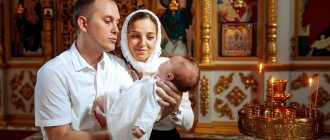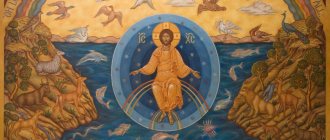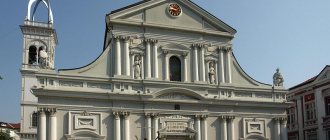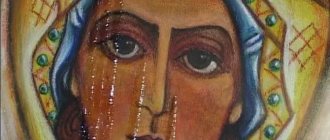Church as a community of Christians
Christianity is the largest world religion in terms of number of adherents and area of distribution. The community of Christians who honor Jesus Christ as God and Savior forms the Church. In Orthodoxy, the entire Universal Church is represented by individual Local Churches. They are all equal to each other, independent of each other, and there is no dominant one among them. The question naturally arises: who was the first to accept Christianity in the world?
Jerusalem
Currently, there are 15 Local Orthodox Churches: Constantinople (autocephaly in 381), Alexandria (since the 5th century), Antioch (patriarchate since 451), Jerusalem (patriarchate since 451), Russian (officially autocephaly in 1589), Georgian (autocephaly restored in 1917), Serbian (since 1920), Romanian (since 1925), Bulgarian (since 1953), Cyprus (since 1947), Hellenic (since 1833), Albanian (since 1922), Polish (since 1924), Czech and Slovak (since 1951), American (since 1970).
However, in the Orthodox world a list has been approved - a diptych, in which all Local Churches are listed by “rank of honor”. It takes into account the antiquity of the Churches, the time of the proclamation of autocephaly, the political and historical significance of the city centers. Thus, the Church of Constantinople is recognized as senior in honor and stands first in the diptych. According to Tradition, it was founded in 38 by the Apostle Andrew the First-Called, who came from Palestine.
Basilica of the Nativity, Bethlehem (beginning of construction - 325 AD)
The Basilica of the Nativity is a UNESCO World Heritage Site and is currently under renovation. This church is divided among four religious communities - Orthodox, Armenian Apostolic, Roman Catholic and Syro-Jacobite Orthodox, between which clashes periodically arise.
Photo: (CC BY 2.0)
Photo: (CC BY-SA 3.0)
Photo: (CC BY-SA 3.0)
Who was the first to accept Christianity?
The origin of the Christian religion dates back to the 1st century. It is directly related to the earthly life of the Savior, His Teaching and Death on the Cross. According to the Holy Scriptures, Jesus Christ, by His earthly nature, was a Jew, like His disciples. Therefore, the question of who was the first to accept Christianity has long been resolved. It is a historical fact that the first to believe in Jesus as the Savior of the world were the Jews - the inhabitants of Palestine. However, thanks to the apostolic preaching, faith in Christ quickly spread throughout the Roman Empire.
From that time on, the concept of “Χριστιανοί”—Christians—was assigned to the followers of Christ (Acts of the Apostles, 11:26). For the first time, the followers of Christ were called Christians by the pagans of Antioch (Asia Minor). This name was used by them as a mocking nickname. However, Christians took it as a self-name and began to use it in everyday speech.
Symbolism
Heaven on earth, the place of God's real presence, the temple has complex symbolism that introduces the believer to the reality of the Kingdom of Heaven.
Building shape
It developed gradually, after the end of persecution of faith (from the 4th century):
- it is believed that the oldest of them is the so-called “ship building”, the building is somewhat elongated, really resembling a ship; this is exactly what the first catacomb churches looked like on the graves of martyrs; in addition, the shape is reminiscent of the Zion Upper Room, where at the Last Supper the Lord established the Sacrament of the Eucharist; finally, the elongated temple is called “ship”, since the holy fathers called it “ship of salvation”;
- Another common type is the cruciform church, which resembles not only the Crucifixion; the four ends point to the cardinal directions, saying that the teachings of the Lord have spread throughout the world, for Him “there is neither Greek nor Jew.”
Much later, rotundas appeared (round in plan, a symbol of Eternity), octagonal, symbolizing the star of Bethlehem, quadrangular, meaning the completeness of the world.
The destroyed Church of the Nativity in the village of Koptevka, Ulyanovsk region. Year of construction: 1830. A monument of the era of late classicism with a unique embodiment in the form of a rotunda. The bell tower of the second half of the 19th century is an example of late eclecticism architecture.
Domes
They also have their own symbolism:
- round - means the vault of heaven; the color of the dome can be green (in honor of the Holy Trinity), blue (at the temples of the Virgin Mary, Her traditional color), gold (the color of the Kingdom of Heaven)
- the so-called “ onion” , also similar to a burning candle - in fact, the burning of the souls of believers; such domes are often gilded, which makes them even more similar to the fire of a candle;
- from the 16th century Aesthetically beautiful domes in the form of tents are appearing across Russia, a symbol of aspiration upward (which is quite close to Western architecture)
White, green, blue...
Finally, the color scheme of the walls and domes is also significant.
Church of St. Nicholas in Tolmachi
Old Russian churches are usually white. This is the color of the Lord’s clothes on the icon of the Transfiguration, when, while on earth, Christ showed the disciples “His glory, like a man,” that is, as much as they could contain. A reflection of the glory of God is the white stone temple. Later, church buildings are painted in different colors. Sometimes you can use them to determine the dedication of a church:
- The walls of churches dedicated to martyrs are often painted red
- green m - to the venerable, that is, holy monks;
- blue - to the Mother of God;
- yellow walls are found near the churches of the saints.
The domes also have different colors - they, as a rule, are either golden, or have blue, green colors, or can also be black, symbolizing monasticism. Such domes can often be seen in monasteries.
Holy Assumption Cathedral of the Trifonov Monastery Cathedral in Kirov (Vyatka)
The Jerusalem Church is the first in the world
The Jerusalem Church is the cradle of Christianity, the mother of all Churches. It preserves the treasures of the Holy Land, sacred to Christianity, associated with the life of the Savior, His Teaching and the redemption of the world. The first bishop and organizer of the Jerusalem Church was the Apostle James, the brother of the Lord according to the flesh (died in 62 or 69).
On the canonical territory of the Jerusalem Church there are such great shrines as Golgotha (the site of the crucifixion of Jesus Christ) and the Holy Sepulcher. The monasteries of the Jerusalem Church are known throughout the Christian world. Monastery of the Holy Sepulcher with the Church of the Resurrection of Christ. Bethlehem Monastery with the cave where the God-Man was born. Jordan Monastery of John the Baptist, located next to the supposed site of the Baptism of Jesus. Lavra of Saint Sava the Consecrated in the Judean desert. The Jerusalem liturgical charter, which is still used in worship today, was created here. Sinai Monastery of St. Catherine with the Burning Bush bush.
Participants in the Ecumenical Councils, Archbishop Cyril of Jerusalem (4th century) and Patriarch Juvenal of Jerusalem (5th century), the compiler of the Jerusalem Rule, the Venerable Savva the Sanctified (5th century), the church hymnist Saint Cosmas of Jerusalem (8th century) and many other saints belonged to the Church of Jerusalem.
The most ancient Orthodox churches in Russia
Church of John the Baptist, Kerch
Rating: 5.0
Photo: Sergey Ashmarin, CC BY-SA 3.0
Date of foundation: 9th century
The oldest existing church in Russia, which existed even before the formation of Kievan Rus. The temple has a long and complex history. It was built by the Byzantines during their dominance in the territory of modern Russia. The exact date of construction of the church is not known for certain: historians are guided by a Greek inscription on one of the church columns. It says that Kyriakos, son of George, grandson of Vindir, was buried in the church in 752.
Researchers believe that during the construction of the temple, elements of an older structure (approximately 6th century) were used. These included carved marble columns with blue veins, Greek amphorae in the walls (eliminating echoes and amplifying sound) and baked Byzantine brick. The bright red and white masonry used in the construction of the church is a recognizable element of the architecture of ancient Byzantium.
Stone blocks alternated with plinths (the “ancestor” of brick) to create a strong, reliable structure. This not least contributed to the fact that the building has survived to this day.
From the time the church was built, there remains a foundation, powerful columns and a courtyard with a famous stone slab, in which St. Andrew the First-Called left the imprint of his foot. During the period of the Crimean Khanate, the Church of John the Baptist was used as a mosque (Muslims painted over the entire wall painting). Later, the structure was repeatedly remodeled by Russian princes; under the Polovtsians, the temple was empty. During the Soviet Union it was closed: the city lapidarium, a museum of archaeological antiquities, was located here.
St. Sophia Cathedral, Veliky Novgorod
Rating: 4.9
Photo: User№101, CC BY-SA 3.0
Date of foundation: 10th century
The oldest of the stone buildings from the times of Kievan Rus that have survived to this day. Once Prince Mstislav said: “Where St. Sophia is, there is Novgorod.” The famous St. Sophia Cathedral was founded back in 1045 by Yaroslav the Wise himself and his son Vladimir. Throughout its almost thousand-year history, the temple remains the most important cathedral church in the Novgorod land.
The incredibly beautiful white stone cathedral was built in record time - just 5 years. Today the walls of the temple are white, but this was not always the case. Initially, its vaults were covered with frescoes, and the walls (both outside and inside) were completely uncovered. But the frescoes did not appear on the building immediately: only 50 years after the consecration of the temple. Some fragments of them remain on the central dome.
But the images of Saints Constantine and Helena in the Martiryevskaya porch have survived to this day. Moreover, not only this fact is noteworthy, but also the technique in which the work was done: the painting was carried out not on wet plaster (traditionally), but on dry plaster. Similar examples of fresco creation no longer exist. The temple also preserves a place of prayer for the Tsar, established by order of Ivan the Terrible. The chandelier donated to the temple by Boris Godunov has also been preserved.
Temple at the Nizhne-Arkhyz settlement, Karachay-Cherkessia
Rating: 4.7
Photo: Mariluna, Public domain, via Wikimedia Commons
Date of foundation: 10th century
One of the oldest religious buildings built on the territory of modern Russia even before the formation of Rus'. The Northern Temple, made of stone, is located near Nizhny Arkhyz - the territory on which in former times the capital of the ancient state of Alania was located, whose inhabitants adopted Christianity half a century before the baptism of Rus'.
The walls of the structure are made of sandstone; thin stone slabs with a birch bark layer inside were used to finish the roof. This is a rather unusual architectural technique that has not been used anywhere in the North Caucasus. The only baptismal font in Alanya was installed inside the temple. The structure was built in honor of St. Nicholas - the patron saint of Nicholas the Mystic - the then Patriarch of Constantinople.
Throughout the history of its existence, the Northern Temple has never been rebuilt: its current appearance is identical to that of 1000 years ago. On the rocks located near the temple, you can still see the face of Jesus Christ written directly on the stone. There are currently no services held at the Northern Church. The exception is May 6: the day of remembrance of the most revered saint in the Caucasus - St. George the Victorious.
Peter and Paul Church, Smolensk
Rating: 4.8
Photo: Ludvig14, CC BY-SA 3.0
Date of foundation: 11th century
The Church of the Holy Apostles Peter and Paul is the oldest in the city. The monumental religious building was built in 1146 by order of the grandson of Vladimir Monomakh, Rostislav Mstislavovich. According to the plan, the Peter and Paul Church was supposed to become a modest refuge for the prayers of the Smolensk princes.
The church was built using thin clinfa, the individual elements of which were held together with clay. The walls were not covered with plaster, which sets the temple apart from other buildings of the pre-Mongol period. Although historians are inclined to believe that most religious objects of that time were just like that.
In the 16th century, when the Time of Troubles came - Smolensk was captured by the troops of the Polish-Lithuanian Commonwealth - the temple was converted into a Catholic church. It was here that the residence of the famous Greek Catholic religious figure, Archbishop Leo Krevz-Rzhevusky was located. For the convenience of the latter, in the 30s of the 17th century, two-story chambers were built near the temple. After the return of the building to the fold of the Russian Church (1654), the temple again began to function as an Orthodox one.
During the Napoleonic invasion, the church was looted, and the raging fire took its toll: the building was severely damaged (even the bells melted). After reconstruction, the Peter and Paul Church acquired a radically different appearance.
Assumption Cathedral, Vladimir
Rating: 4.6
Photo: Ghirlandajo, CC BY-SA 4.0
Date of foundation: 12th century
The construction of the white stone cathedral in Vladimir began about 800 years ago, during the reign of Prince Andrei Bogolyubov. According to his plan, the temple under construction was to become the most important temple of the strong principality of Vladimir-Suzdal Rus' and a symbol of the unity of all Russian lands.
The work was carried out quickly and on a large scale, and the height of the Vladimir temple surpassed even those in Kiev and Novgorod. The church is not inferior to them in splendor: the walls of the building are decorated with luxurious frescoes, on the floor there are colored mosaics and gilded slabs, under the arches there are chandeliers made of gold and silver.
The cathedral had to endure many trials: it was repeatedly burned in fire, but was miraculously reborn. The first and most terrible fire occurred in 1238, during the invasion of the city by Batu Khan. The inhabitants who had taken refuge in the temple died in the smoke of the fire, all the relics were looted, the incredibly beautiful paintings were damaged, but the temple survived the fire. A century later it was restored. It was during that period, and this was the beginning of the 15th century, that Andrei Rublev painted the walls of the temple. Today the church is one of the few in which you can see the work of the famous Russian icon painter.
Spassky Cathedral, Kostomarovo
Rating: 4.5
Photo: Sdl77, CC BY-SA 4.0
Date of foundation: 12th century
There are many cave temples hidden in the Voronezh steppes, but the Spassky Monastery, built near the village of Kostomarovo, is the largest and oldest of them. The structure was literally carved out of the chalk rock - bizarre pillars (“divas”), whose origin is still unclear.
Construction work was started by local monks in the 12th century and continued with minor interruptions for as long as 200 years. The result of painstaking and complex work was a grandiose cathedral with a capacity of 2000 people. The exterior of the temple is decorated with magnificent domes and mosaic icons; inside the walls are decorated with frescoes carved directly into the rock.
Next to the temple on the hillside there are the cells of hermit monks, stern in their asceticism, green with dampness. But the most gloomy and mysterious place of the monastery is considered to be the Cave of Repentance, which is a dark corridor leading to a tiny confessional cell. Before the 1917 revolution, the most ardent sinners were sent to the Spassky Cathedral. Today it is a place of pilgrimage.
Eski-Kermen, Crimea
Rating: 4.3
Photo: Vadim Indeikin, CC BY-SA 3.0
Date of foundation: 12th century
One of the most unusual buildings in the country and the most unusual on the Crimean Peninsula. The temple is part of the cave city of Eski-Kermen. This is a modest-sized church, carved directly into the limestone rock. It has a miniature area of 19 square meters.
A window and 2 small entrances were cut out of a huge boulder. On the northern wall, only one fresco with an unusual plot remained intact, which gave the name to the temple. The image shows 3 figures - horsemen in flowing cloaks. The central figure is St. George the Victorious, piercing a dragon with a spear, flanked by horsemen with spears. It is likely that these are only images of local heroes: 2 graves were cut right into the floor of the structure.
Church of the Deposition of the Robe, Kirillov
Rating: 4.4
Photo: Sergey Galchenkov (Sergey Galchenkov), CC BY-SA 3.0
Date of foundation: 15th century
This is the oldest building in the country made of wood. An important clarification – with confirmed dating. The fact is that the Church of the Laying of the Robe has a rival - the Church of the Resurrection of Lazarus. For a long time it was considered the oldest (14th century), but there are no documents confirming the age of the structure.
But with the St. Cyril Church, everything is more precise - its age is indicated on the canvas antimension (a piece of fabric with a piece of the saint’s relics sewn in): the temple was consecrated in 1485. In addition, a dendrological study of the log houses used in the construction of the temple was carried out: it showed that the trees were cut down approximately in the 80s of the 15th century.
The foundation stone of the temple was carried out by Archbishop Joasaph, known in the world as Prince Ivan Obolensky, who became a monk after the death of his wife during childbirth. The church looks very modest, made of 3 log buildings of different heights. During the Soviet years, the temple was lucky to remain intact: it was recognized as an architectural monument. In order to preserve the structure, it was transported to the Kirillo-Belozersky Monastery, restored before transportation. There are no church services today.
Why is the Church of Jerusalem not in first place in the diptych?
In the list of Autocephalous Local Churches, the Jerusalem Church is in fourth place. What is the reason for this? After all, everyone knows who was the first to accept Christianity - Christians in the world appeared in Palestine.
In 66, there was an uprising of the Jewish people against the power of the Roman Empire. As a result of the siege and storming of Jerusalem, the capital of Israel was razed to the ground. Many Jews died, and those who remained were scattered throughout the world. Due to tragic historical reasons, the Church of Jerusalem lost its unofficial primacy, losing it to Rome, the capital of the empire.
Since the 4th century, a gradual revival of the Jerusalem Church began. It was associated with the activities of the Byzantine emperor Constantine I and his mother Helen. In 451, at the Fourth Ecumenical Council, the Bishop of Jerusalem received the title of patriarch. Thus, the Church of Jerusalem again took its place in the Ecumenical diptych, but in fifth place, behind the Roman, Constantinople, Alexandria and Antioch Churches. This list of Churches establishes a certain sequence of standing at the altar during joint services. In 1054, the Roman Church left the family of Orthodox Churches. From that moment on, the Church of Jerusalem occupies 4th place in the diptych.
“The Jerusalem Church historically takes precedence in the family of Local Orthodox Churches, because it was in Jerusalem that the Lord Jesus Christ suffered and died on the Cross, in Jerusalem He was resurrected, and it was the Jerusalem community of the apostles that witnessed the Resurrection of Christ. No one will ever take away this historical primacy from the Church of Jerusalem” (Metropolitan Hilarion of Volokolamsk).
Trier Cathedral (340 AD)
Trier Cathedral is the oldest in Germany. The most interesting thing about the cathedral are its relics. Here there is one of the Nails of the Cross of the Lord, which, according to the Gospel, was one of the Instruments of the Passion. There is also an artifact known as the Robe of the Lord, which He wore shortly before the crucifixion. But this relic is not often shown: it was last shown in 2012.
Photo: maxpixel (CC0 Public Domain)
Photo: ThomasWolter / pixabay (Pixabay License)
Photo: (CC BY-SA 3.0)
Who first accepted Christianity: the history of the Jerusalem Church
In the 7th century, the Palestinian lands fell under the rule of Muslim Arabs. During the First Crusade of 1099, the Latin state of Jerusalem was formed by Western crusading knights. The Crusaders expelled the Orthodox patriarch and installed a representative of the Pope in his place. The administration of the Orthodox Church of Jerusalem was carried out from Constantinople.
At the beginning of the 12th century, the Holy Land came into the possession of the Egyptian Sultan. All the temples in Jerusalem were converted into mosques. Only the Church of the Resurrection of the Lord remained Christian. In the 13th-15th centuries, the Church of Jerusalem was subjected to severe persecution by Egyptian soldiers (Mamluks). The destruction of many churches and the mass extermination of the clergy date back to this time.
The relatively quiet life of the Jerusalem Church began in the 16th century after the Ottoman conquest of Palestine. Christians were given the opportunity to practice their faith. Since 1537, Orthodox Greeks began to be elevated to Jerusalem patriarchs. Until this time, they were elected from Christian Arabs. The Greek patriarchs were able to significantly improve the financial situation of the Church. They bought monasteries belonging to Georgians and Serbs, and established direct relations with the Russian tsars.
The Jerusalem Church has repeatedly received financial assistance from Russia. This made it possible to open theological schools and public schools. The Monastery of the Holy Sepulcher was able to pay off its existing debts.
How is a temple different from a cathedral and a chapel?
Initially in Russia this name was not given to a building, but to a body of clergy, which in large cities with hundreds of parishes was united into the so-called “secular clergy .” For example, in Moscow there were seven “magpies”, each with clergy from about 40 churches. there was a cathedral church, where on Sundays a large service was held, to which the clergy of other churches came in a procession of the cross. Gradually, the cathedral began to be called simply the main church of the diocese, where the bishop usually serves.
Moscow. Consecration of the Cathedral of Christ the Savior, August 19, 2000. Photo: Sergey Vlasov.
A chapel is distinguished from a temple by:
- very small sizes;
- There is no altar or throne; therefore, full-fledged worship cannot be performed here, but prayers are usually served.
Typically, a chapel can:
- to be on the site of a once former church building, as if in memory of it;
- mark the resting place of a revered righteous person; often chapels are generally built in cemeteries; here you can pray in front of icons, light candles for the repose of loved ones;
- sometimes chapels are created for the sake of miraculous icons, for example, in Russia there are several chapels dedicated to the Iveron Icon of the Blessed Virgin Mary , the “goalkeeper” (located above the holy gates) of the monastery of the same name of St. Mount Athos; similar chapels are also built as the spiritual gates of the city - the most famous of them is located at the entrance to Red Square in Moscow.
The recreated Iverskaya Chapel on Red Square in Moscow
The most beautiful
To date, none of the churches has surpassed the beauty of Sophia of Constantinople (consecrated on December 25, 537 ). The walls were decorated with hundreds of mosaic images; not only sunlight, but even starlight was skillfully used for lighting. The space was so large that even its incense during the service was performed in a special way: incense smoke rose from under the floor.
Hagia Sophia in Novgorod was built in 1045-1050. by order of the Novgorod prince Vladimir.
It is well known that the ambassadors of the Russian Prince Vladimir who visited here decided to become Christians after hearing the amazingly beautiful divine service performed according to the unique Rule of St. Sophia - which later became the first liturgical Rule in Rus'.











